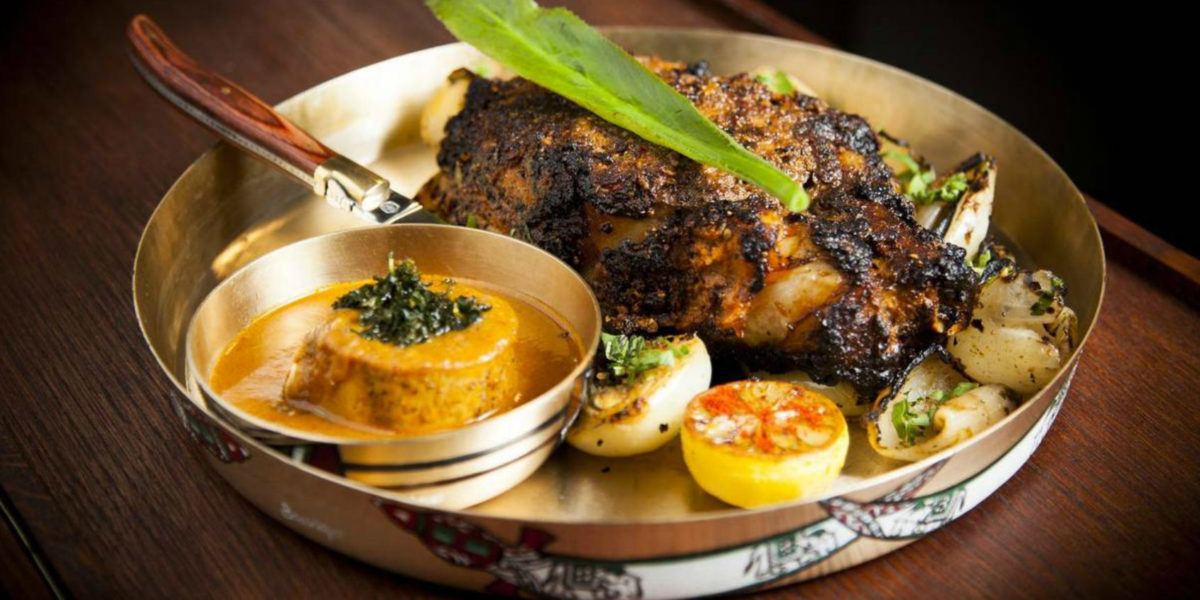Another day, another restaurant opening.
Next month, restaurant group JKS Restaurants will open Brigadiers, an Indian barbecue joint modelled on the army messes frequented by colonial-era officers. These army messes were said to be social hubs, with a focus on beer, card games and pool. The JKS Restaurants team, who have already enjoyed success with regional Indian food at Gymkhana and Hoppers, clearly feel the combination of beer and Indian barbecue is worth exploring.
Probably makes sense, doesn’t it?
I’m fascinated by how cuisines hit a restaurant scene. At what point does one nation take a liking to the flavours and textures of another? How do the architects of that foreign cuisine shape and alter their food to suit local palates? And how does a successful foreign cuisine innovate, particularly when new cuisines come into the spotlight?
Indian cuisine is a good example of a restlessly innovative beast. The British love affair with the ruby murray stretches back to the 18th Century, where East Indian Company men returned home wanting to recreate the tastes of India. ‘Curry and rice’ popped up on menus by the mid-18th Century, with the first completely Indian restaurant, Hindoostanee Coffee House opening in 1810 in Mayfair. Queen Victoria herself was apparently a fan, introduced to chicken curry with dal and pilau, by Abdul Karim, a youthful servant.
But it was in the 1940s and 1950s that the wider British public first caught the curry bug. At the time most major Indian restaurants in London employed ex-seamen from Bangladesh. After the Second World War, they bought bombed-out chippies to sell curry and rice alongside fish, pies, and chips, staying open after 11pm to catch the after-pub trade. As customers became increasingly fond of curry, these restaurants discarded British dishes entirely.
Throughout the following decades, Indian food enjoyed its heyday, with the chicken tikka masala even being dubbed in 2001 “Britain’s national dish” by the foreign secretary. And so, a new challenge; how do you build on this success? As with any successful incumbent brand, Indian food was encountering competition. Enter Thai food, offering freshness and vibrancy with Thai green curry that made Indian food look like dull sludge in comparison. Or Mexican food, bringing sloppy hand-held spiciness to the masses with the burrito. Or Vietnamese food, with the clean and clear flavours of pho packing a more nuanced punch than a vindaloo. Indian cuisine risked looking boring in comparison.
Thank God for Atul Kochhar and Vivek Singh, who elevated the cuisine to the upper echelons of fine dining with Benares and The Cinnamon Club. They showed the establishment that Indian cuisine could be both flavourful and delicate, impactful and refined. It could also be regional too, and need not be synonymous with curry.
This regional specificity entered the casual dining market too. Vivek Singh, clearly recognising he was onto something, launched Cinnamon Bazaar, a restaurant modelled on the Indian market scene with small sharing plates. Dishoom, modelled on the Irani cafes of 1960s Bombay, is enjoying a golden era of expansion in the face of so many chain closures. Both are as far away from the local takeaway as you can imagine. The future of Indian food looks bright.
So what conclusions can we draw from this? It seems the future of a cuisine lies in regionality; innovation by delivering the true flavours of a nation, rather than the dishes of a homogenised lump. Cuisines that fail to innovate, assuming what has always sold well will continue to do so, leave themselves exposed to more dynamic competition.
Brigadiers and more look set to be the future. Jamie’s Italian, Zizzi’s and co., take note.


